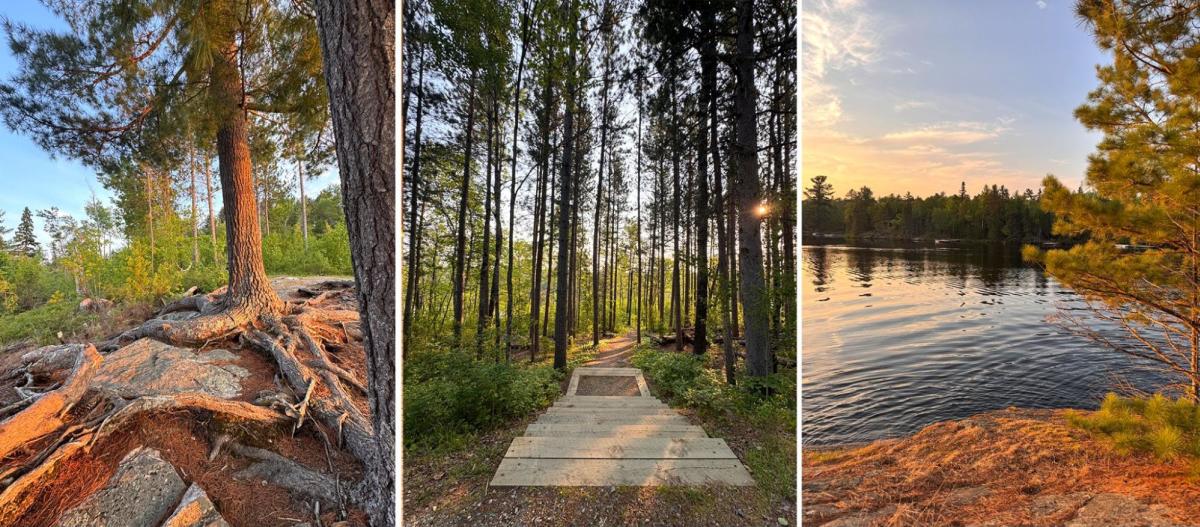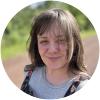Frontcountry camping means staying in a developed campground—often called “car camping” or “drive-in camping.” Most sites are accessible by vehicle, though some, like those at Split Rock Lighthouse State Park, are cart-in. In the Ely area, frontcountry campgrounds include South Kawishiwi River, Fenske Lake, and more. It’s a great way to introduce kids—or anyone new to the outdoors—to camping. In contrast, backcountry or “remote” camping includes trips into the BWCAW and similar experiences, such as the Circle Route outside of the BWCAW, which you can read about in our Spring & Summer Guide here . For a base frontcountry packing list, click here .
Our youngest child’s first camping trip was when he was two weeks old. I was restless on maternity leave and needed to get out of the house and into the woods. We chose a campground that was close to our South St. Paul home at the time–Nerstrand Big Woods State Park. It was a quick two-night trip. Despite the forecast calling for light overnight rain, a huge thunderstorm rolled through and it poured the entire night, flooding our campsite and sending us fleeing to the truck. Our oldest slept in the backseat, the baby slept on me, and my husband and I talked, watching the storm fade with the dawn and eating cold breakfast burritos.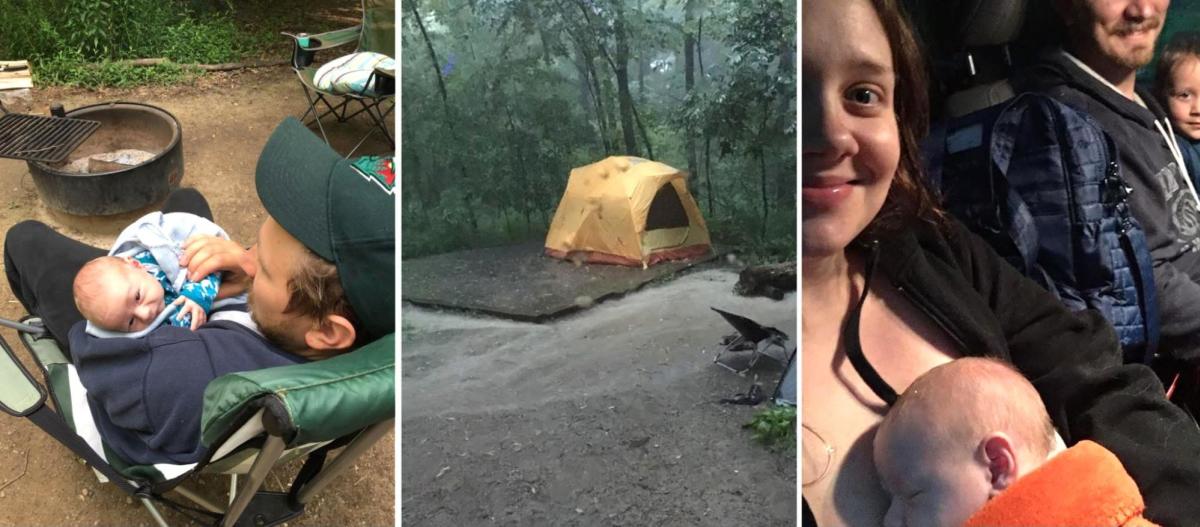
This was not even close to the ideal scenario of sunshine, fresh air, stargazing, and family bonding outdoors. But memories were made. Our oldest still talks about that trip, and our youngest loves to hear the story of how he slept through the chaos of evacuating our soggy tent in the middle of the night. That’s the point of camping, really: stepping out of your controlled environment and into one with far more variables, less control, and unexpected challenges.
Things you didn’t expect can and will happen, and you practice resilience, flexibility, and self-reliance skills as a family–ideally coming out stronger than when you went in.
That two-week-old baby is now nearly eight. We still camp often, but now our home base is just outside Ely. Even back then on that Big Woods camping trip, we knew we’d move north someday.
On a 2019 land-scouting trip, I camped solo with our oldest—then six—at Fenske Lake Campground off the Echo Trail. My husband stayed back in the Cities with our youngest. That trip was unforgettable and confirmed that Ely needed to be our home. We’ve returned to Fenske Lake three times, even now as locals.
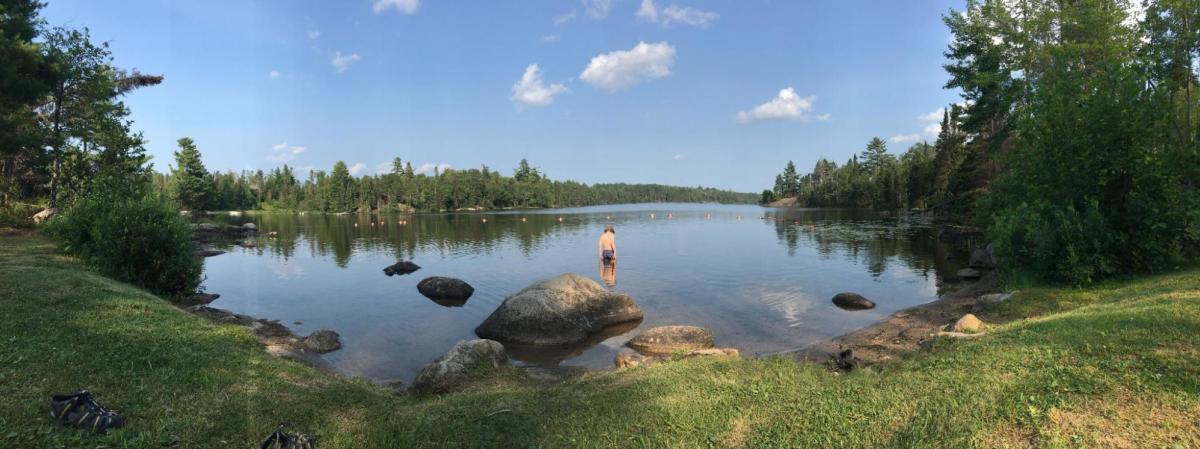 2019 Fenske Lake Trip
2019 Fenske Lake Trip
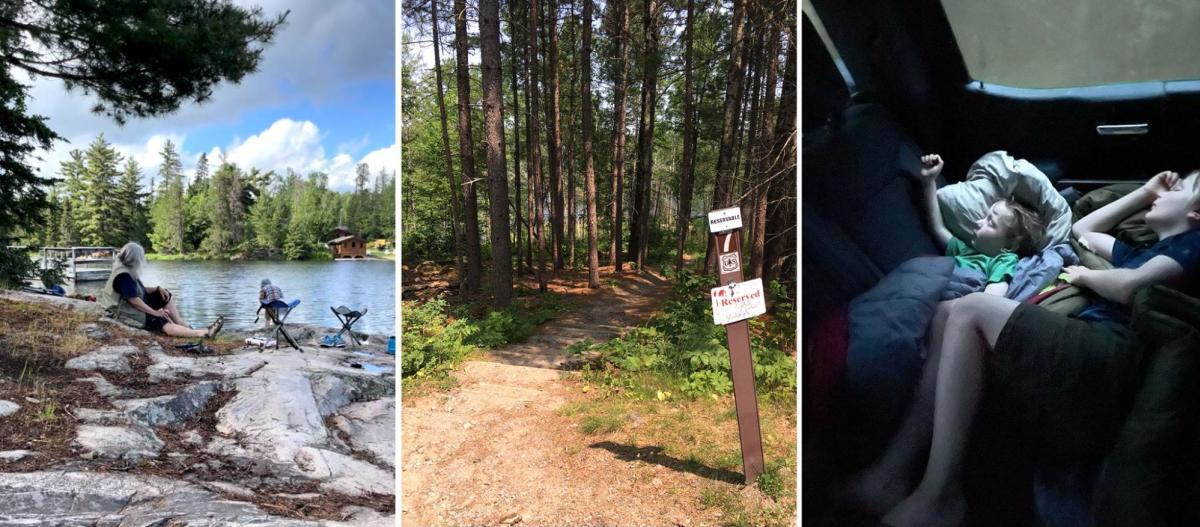 2022 Fenske Lake Trip - Three generations camping at our “backup” of Fenske Lake, and, once again, we ended up sleeping in the truck.
2022 Fenske Lake Trip - Three generations camping at our “backup” of Fenske Lake, and, once again, we ended up sleeping in the truck.
In 2022, we planned to take the kids into the BWCAW for the first time, camping with my mom. Everything was packed and loaded when we heard a radio warning about a severe thunderstorm headed for the BWCAW—golf ball-sized hail, cloud-to-ground lightning, and strong winds. The broadcast even advised using sleeping mats or life vests for protection.
We called it. We didn’t want their first BWCAW trip to be traumatic. Luckily, we snagged a last-minute site at Fenske Lake and salvaged the trip, knowing we could head to the vehicle if needed. Sure enough, when the storm hit, it was severe enough that the kids and I slept in the truck.
Another plan derailed—another unforgettable trip.
We finally made it to the BWCAW in June 2023—during a severe drought, a torrential downpour, a burn ban, and peak mosquito season. But that’s a backcountry camping story for another post!
This year, we booked the same Fenske Lake campsite that started it all. Our whole family kicked off summer break with a two-night trip. It was a much-needed escape from routine—and sure enough, the unexpected happened again. Read to the end to find out what threw us for a loop this time.
After twelve years of camping with kids, we’ve developed a solid system and a well-refined frontcountry packing list. I’ve learned a lot through trial and error—some of it the hard way—and put together my top tips and must-haves to share.
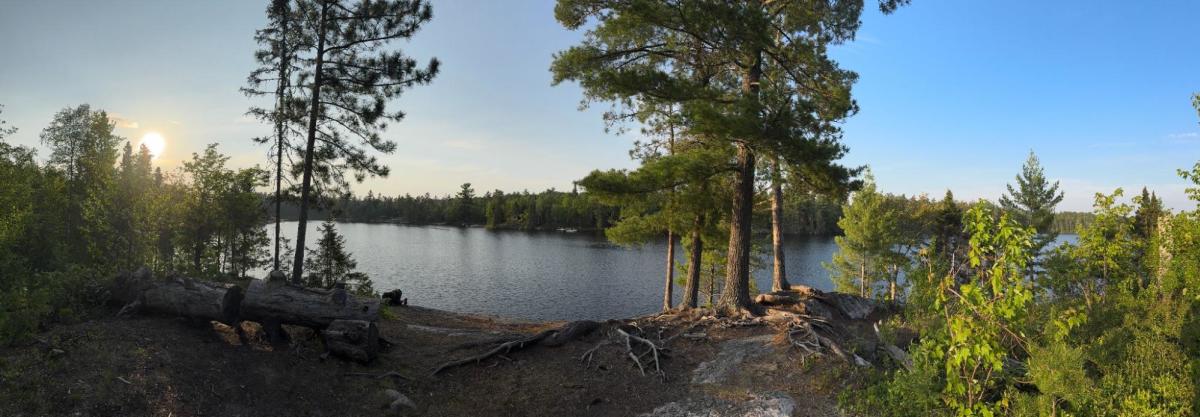
2025 Fenske Lake Trip
Top 7 Tips for Frontcountry Camping with Kids
- Use what you have—or can borrow.You don’t need expensive gear or clothing to go camping, especially if you’re new to it. Borrow from friends and family or rent from local outfitters. Some of our friends tried camping this way and realized they preferred rustic cabins instead—totally fine! Ely has plenty of lodging options if that’s your style. Don’t invest in gear until you know you’ll use it regularly. And when you do, it doesn’t need to be new or top-of-the-line. Most of our gear was bought used or handed down. Ely outfitters hold annual used gear sales, and you can also find great deals on Facebook Marketplace, at garage sales, and in up-north thrift stores.
- Know your gear—and test it first.Years ago (pre-kids, thankfully), I forgot the tent poles on a last-minute trip. I ended up sleeping by the fire under clear skies—fine at 21, but not with kids in tow. Now, I always set up the tent beforehand, check for leaks, and test our stove, headlamps, and more. Before our most recent trip, we found the awning pole was broken. With no time to replace it, I made one using sticks, a knife, and electrical tape. It worked great! I also patched a couple of holes in the rain fly. We’ll keep fixing this tent until it can’t be fixed—then we’ll replace it.
- Bring a basic repair kit.Include tent patches, a sewing kit, duct tape, electrical tape, scissors, rope, and anything else you might need to fix gear on the go.
- Make a main packing list—and update it.Eight years ago, our list included a bug net bassinet and diapers. It looks very different now. I keep a digital list that evolves with our family and different trip types. Anytime we think, “We should’ve brought…,” it goes on the list.
- Pack smart—and keep it that way.We’ve fine-tuned our frontcountry packing over the years to save time and make setup and breakdown easier. We use two large water-resistant tarp bags: one for all sleeping gear (bags, mats, blankets, pillows) and one for equipment packed in stuff sacks (stove, fuel, repair kit, first aid kit, games, lanterns, citronella candle, etc.). Each person gets a small backpack with clothes, books, hats, sunglasses, and toiletries. Shelf-stable food goes in a tote that stays in the car. We use a small cooler for short trips and a full-size one for longer stays. Most gear stays packed, so we’re never starting from scratch. Frontcountry camping allows for a few luxuries—a cot for me, fancy markers and paper for our youngest—but avoid overpacking. Organize things so you can access what you need without making a mess.
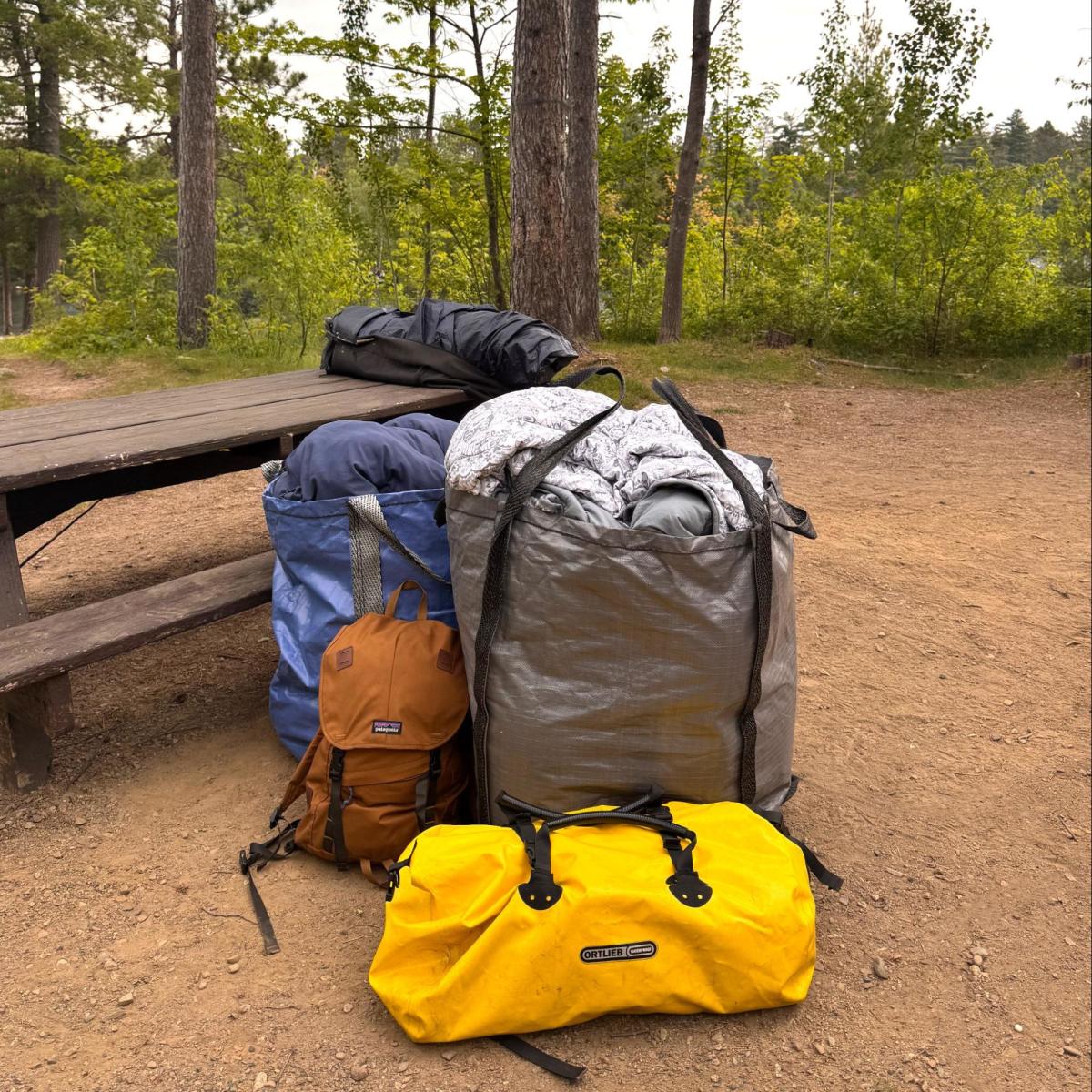
- Keep the food simple.If you love making bacon and eggs over a camp stove at sunrise, this may not apply to you. I’m not that person—going out for breakfast or lunch is one of my favorite frontcountry traditions. On this trip, our menu included premade turkey sandwiches, chips, iced coffee, a breakfast out in Ely, spaghetti with garlic bread, granola, s’mores, and plenty of snacks. Other go-to meals: hot dogs, chicken sausage, PB&Js, rice and beans, premade breakfast burritos, and quesadillas.
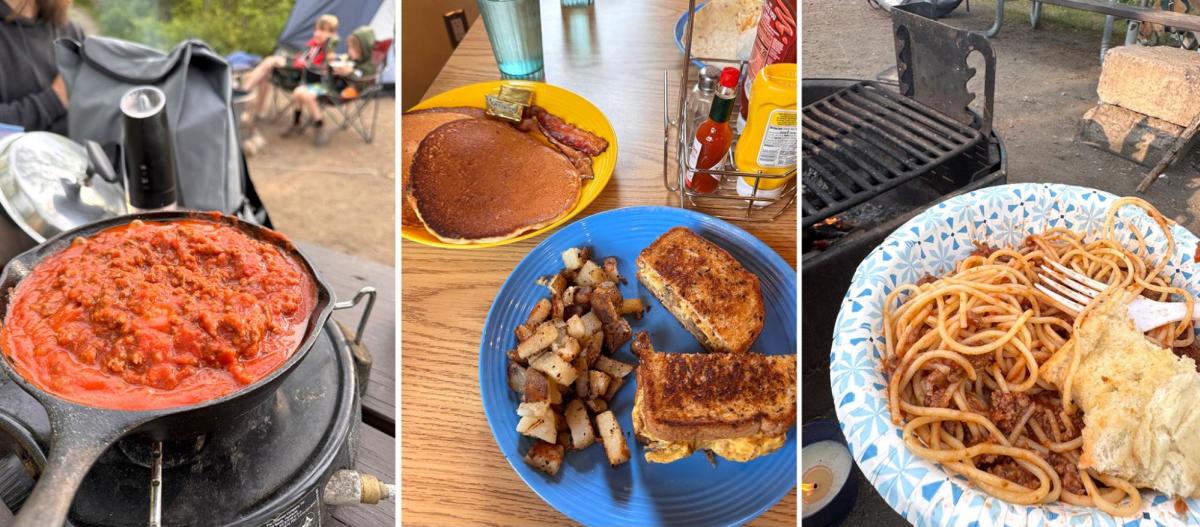
- Prep for bugs and weather.Northern Minnesota summers come with bugs and rain. We like Natrapel for a DEET-free repellent. Bring head nets if mosquitoes are bad—usually in June and early July (we didn’t need them this year).
Do tick checks daily. Pack winter hats if nights will dip below 50°F, and bring layers. Always have good rain gear and something to do in the tent: we play cards, draw, nap, and read while it pours.
Top 10 Frontcountry Camping Must-Haves
Beyond the basics , these are the ten items we’ve found especially helpful to keep in our gear bag over the years.
- Water shoes:The kids wear Crocs; we prefer sock-style water shoes. Northern Minnesota’s rocky beaches make foot protection a must—camping injuries are no fun.
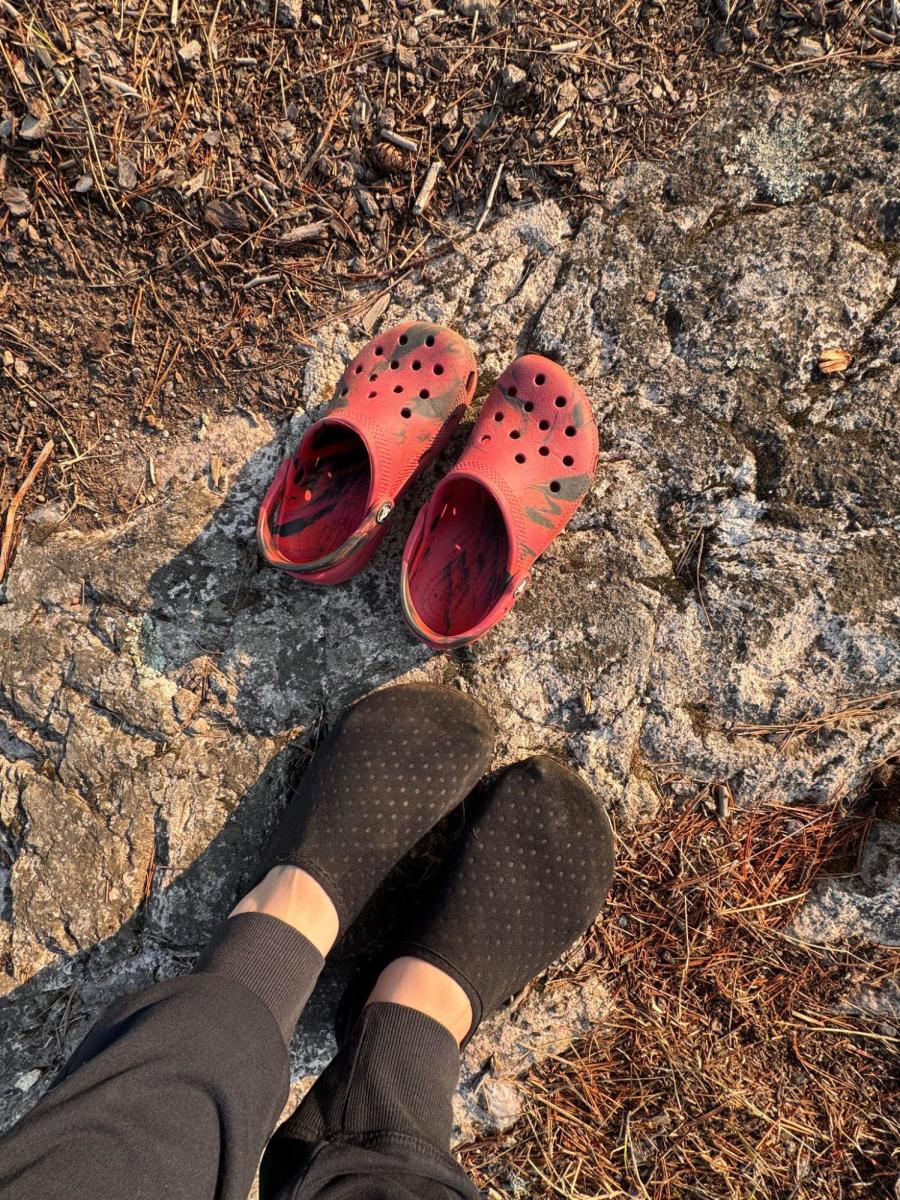
- A solid first aid kit:Along with the basics, include nail clippers, tweezers, gloves, and masks*.
- Reliable rain gear:Even if the forecast looks clear. Our rain kit includes lightweight ponchos, lined raincoats, an umbrella, and a tarp.
- Citronella candle:Surprisingly effective. If bugs are really bad, we add a Thermacell unit.
- Solar charging block
- Backpacking style bug-net hammock:The perfect spot to read or nap. Use tree-friendly strap pads to avoid damaging bark.
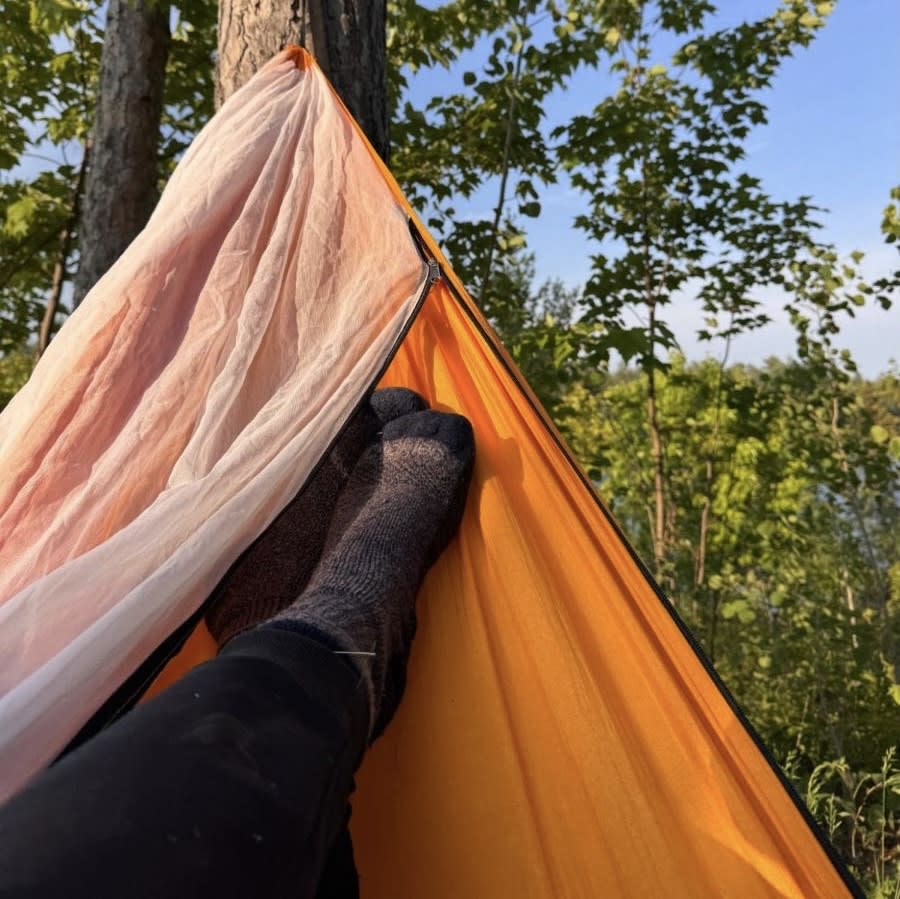
- Quick-dry towels
- Waterproof or water-resistant gear bags:We’ve had gear get soaked during setup—these bags are a game-changer. A tarp works too in a pinch.
- A cot for stargazing around the fire
- Buffs or bandanas:Versatile and essential: wear them for bug protection, warmth, sun coverage, and more.*.
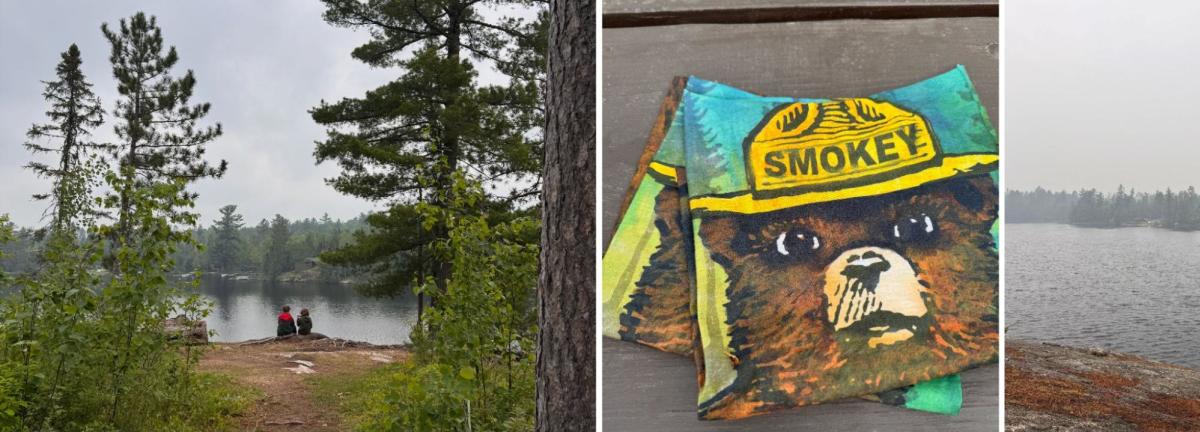 *The masks in our first aid kit and buffs proved useful during a high AQI event on the second day.
*The masks in our first aid kit and buffs proved useful during a high AQI event on the second day.
So what caught us off guard this time?
We forgot pillows and made do with sweatshirts and raincoats. Then came a brief high AQI event from Canadian wildfire smoke. Thankfully, we had four KN95 masks in our first aid kit and buffs to layer over them. The smoke was thick enough that we decided to wear the masks for several hours on day two—then it cleared, and we enjoyed a beautiful, starry evening.
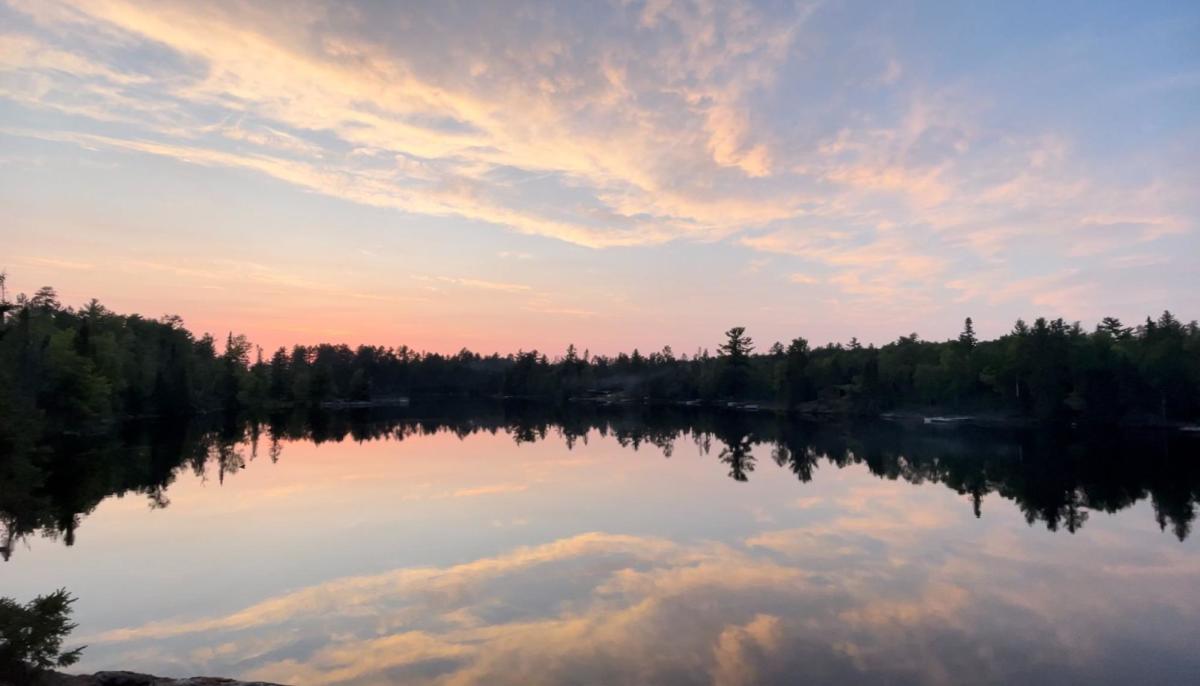
Our oldest spent the rainy first evening catching and releasing fish, then practicing card tricks at camp. Our youngest read for hours and explored a nearby trail, correctly identifying many plants. They played Uno together at the picnic table and scanned for wildlife with binoculars. We all stargazed and spent time at the beach.
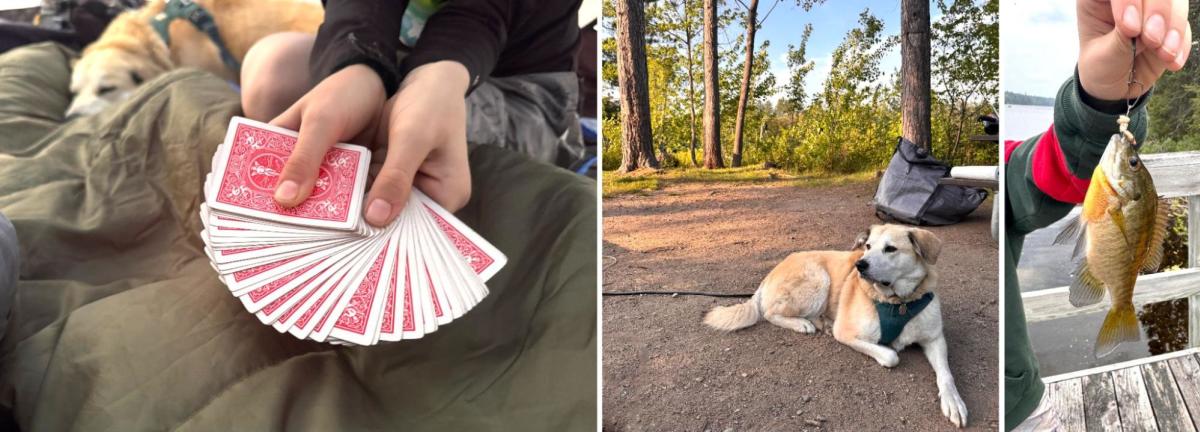
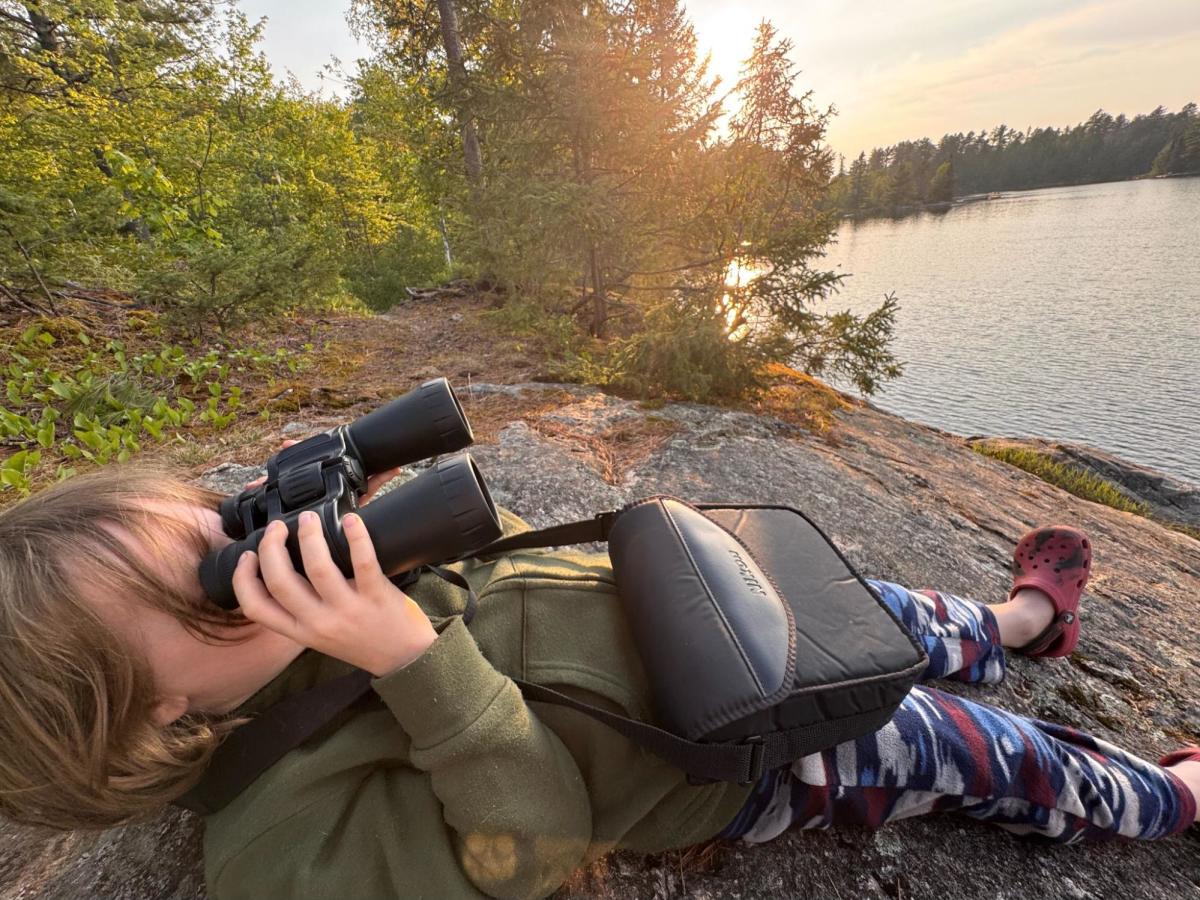
Take the trip. Conditions will rarely be perfect, and you’ll always be busy. Go anyway. The busy will still be there when you return.
Our kids benefit deeply from time outside—building independence, facing challenges, and getting away from four walls and screens. We do too.
We benefit from experiencing the starry night sky, hearing wolves howl and loons call, exploring lakes and forests, and pushing past comfort zones by trying new things. We benefit from the unexpected.